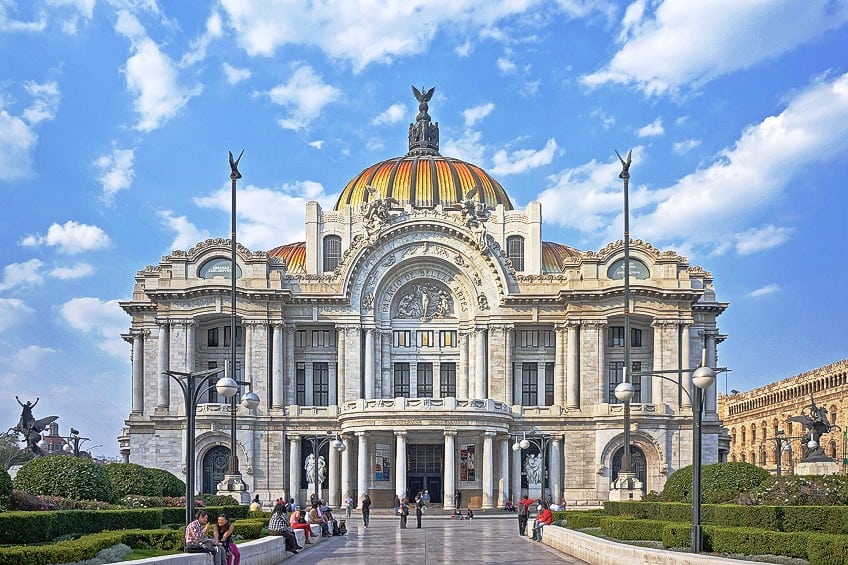Palacio de Bellas Artes in Mexico City – Mexico City’s Cultural Gem
Palacio de Bellas Artes is a stunning cultural center in the heart of the capital city of Mexico. It is a beautiful combination of various styles that is a sight to behold. In this article, we will answer several questions about this cultural center, such as: “When was the Palacio de Bellas Artes built, where is the Palacio de Bellas Artes located, and what is performed in the Palacio de Bellas Artes?”. All of these questions, and more, will be answered, so keep reading to learn more about the Palacio de Bellas Artes in Mexico City!
A Look at the Palacio de Bellas Artes in Mexico City
| Architect | Various |
| Date Constructed | 1904 – 1934 |
| Function | Cultural center |
| Materials Used | Iron, marble, and glass |
| Location | Mexico City, Mexico |
The Palacio de Bellas Artes, also known as the Palace of Fine Arts, in Mexico City, is a cultural center that has become a central location within the most populous city in the country. One of the nicknames that this beautiful building has accrued over the years is the “Cathedral of Art in Mexico”, as it does have a churchlike appearance despite the secular nature of its functions. It has been used to host a vast variety of events throughout the near century since it was completed.
The Palacio de Bellas Artes in Mexico City hosts events like dance, music, theater, and opera.
Additionally, it is often used as an exhibition space for paintings, photography, and so on. However, even when the Palace of Fine Arts is not being used as an exhibition space or event location, it still contains a variety of art pieces year-round. These murals were designed by notable artists from the country, such as David Alfaro Siqueiros and Diego Rivera. The building itself also holds an interesting history within its walls as it started its construction shortly after the turn of the century at the beginning of the 1900s when construction officially began in 1904. The idea was for the building to be finished by 1910, but that never happened. Instead, it was finished three decades after it started construction. This means that it was only finished in 1934.
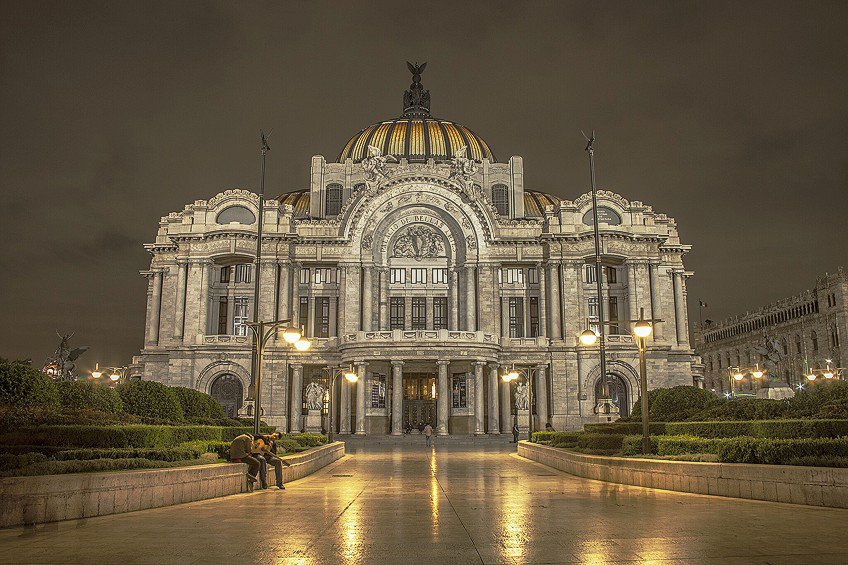
The reason for these extensive construction times is because of a variety of factors. In the beginning, the construction needed to be halted because the entire structure started to literally sink into the soil. It had been built atop spongy soil that could not accommodate the weight of the Bellas Artes. Mexico then went through a period of turmoil during the Mexican Revolution during the ten-year period between 1910 and 1920.
Once this was over, work could finally resume on the beautiful cultural center.
The Palacio de Bellas Artes in Mexico City would immediately become a prominent structure within the capital city as it was seen as the culmination of an artistic vision and a location in which the various artistic achievements of Mexico could be placed on full display for all to see. It was immediately used as a location to exhibit the work of other Mexican citizens, as well as international artists, but it has become far more than this. The Palace of Fine Arts in Mexico City has become a location that can serve as a rallying point for numerous purposes, such as protests, speeches, ceremonies, and much more.
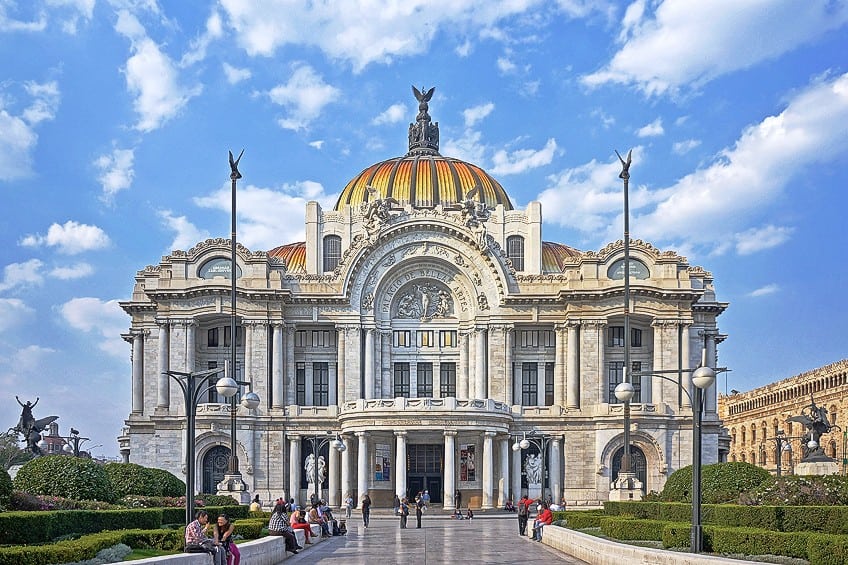
Architecture and Design of the Palacio de Bellas Artes in Mexico City
The Palacio de Bellas Artes in Mexico City may be an important site within the city for reasons related to the preservation of Mexican art and culture, but the building itself is also an important piece of Mexican architecture. The structure had a long design and construction period, as has been mentioned, and this has led to the building being designed by a number of architects over the three decades of its construction.
Some of the most prominent aspects of the structure’s design include the Art Nouveau and Neoclassical exterior that was predominantly designed by Adamo Boari.
The idea for those designs was that it would be a blend of both Mexican and European architectural designs, and so there is a marble façade, numerous sculptures, and a dome. This architect was actually Italian, and as such, he did not enter the design process from a Mexican perspective. The Mexican perspective in terms of architecture would come in with Federico Mariscal. He was a Mexican architect who focused primarily on the interior of the Palacio de Bellas Artes in Mexico City. His work would lead to the clashing of styles between the interior and the exterior, as his interior was Art Deco in general design and application. There are numerous motifs in bronze, crystal, and marble in keeping with Art Deco tradition.
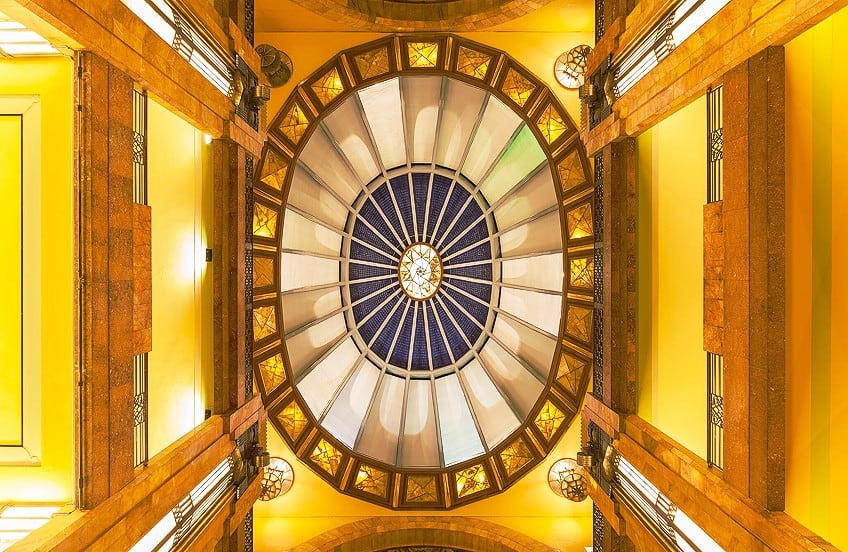
The structure was ultimately completed with numerous murals on its walls from some of the most important and prominent Mexican artists operating at the time. Furthermore, there was also a large glass curtain designed by Dr. Atl, also known as Gerardo Murillo Coronado. This gorgeous glass curtain would become one of the most prominent sights within this famed cultural center. The Palacio de Bellas Artes in Mexico City makes use of a mixture of styles and features an immense dedication to Mexican artistry. It is a stunning sight within the city and can be compared to several other locations within Mexico City, such as the Catedral Metropolitana, which also blends architectural styles.
As the cultural center is located within the historic center of the city, it is near other important structures, such as the Torre Latinoamericana and the Monumento a la Revolución.
This cultural center has become one of the most important artistic and cultural sites within the city, but it is also one of the most stunning pieces of architecture too. Its blend of styles has led to its unique appearance, and the numerous murals on the walls have only added to the gorgeous design of it all.
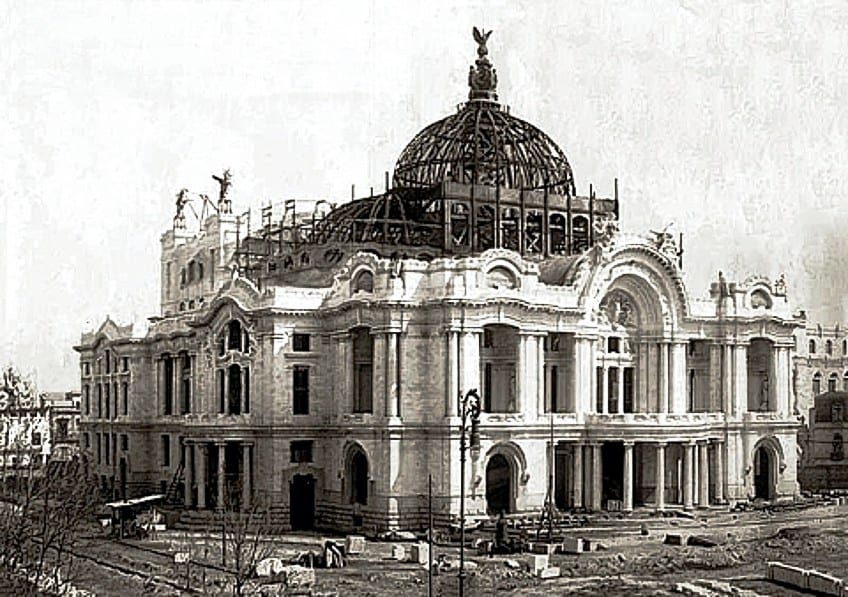
Art and Culture in the Palacio de Bellas Artes in Mexico City
The Palacio de Bellas Artes in Mexico City is host to a number of artistic displays and cultural events. There are certain permanent exhibits within the Palace of Fine Arts, such as the numerous murals that cover many of the walls, and these are by some of the most prominent artistic figures in 20th-century Mexican history. There is also a museum that shows the work of various architects and painters. Some of the figures whose work has been exhibited within the Palacio de Bellas Artes include Mario Pani, David Alfaro Siqueiros, and Frida Kahlo.
Other than this, there have been numerous temporary exhibits within the Bellas Artes.
Mexico may have a stunning artistic history, but there have been international works shown off in this structure, such as lengthy exhibitions focusing on the work of Tim Burton, Picasso, or Leonardo da Vinci. This indicates that while the Palacio de Bellas Artes in Mexico City is a location for the promotion of Mexican artists and artistic achievement, it is also used to host a wide variety of figures from around the world to be on display for the Mexican people who wish to visit this gorgeous cultural center.
The Palacio de Bellas Artes in Mexico City, thanks to its role as an exhibition space and event venue, has been integral to the promotion of Mexican artistry within the city and country. The building itself has also become an important piece of Mexican art in its own right as it has become a source of pride in the city.
The various local and international exhibits within its walls have become an important part of the cultural identity that has been fostered in the country.
Restoration and Conservation Efforts of the Palacio de Bellas Artes in Mexico City
The Palacio de Bellas Artes in Mexico City has been in operation for nearly a century, and as such, there has been damage over the decades. It has already been mentioned that the building itself needed to halt construction because of both building issues and political turmoil, but that was only the beginning of some of the issues. The structure has also seen damage from vandalism, fires, and earthquakes. Thanks to a lack of funds to maintain the structure, some of these issues were not quickly resolved.
However, there have been numerous attempts to restore aspects of the building over the years.
There was restoration of both the dome and the cupulas in the early-2000s, and this involved repairing numerous cracks and sites of corrosion. The glass curtain in the building also needed to be restored in 2010, and even the murals needed to be seen too (although those mural restorations are currently underway).
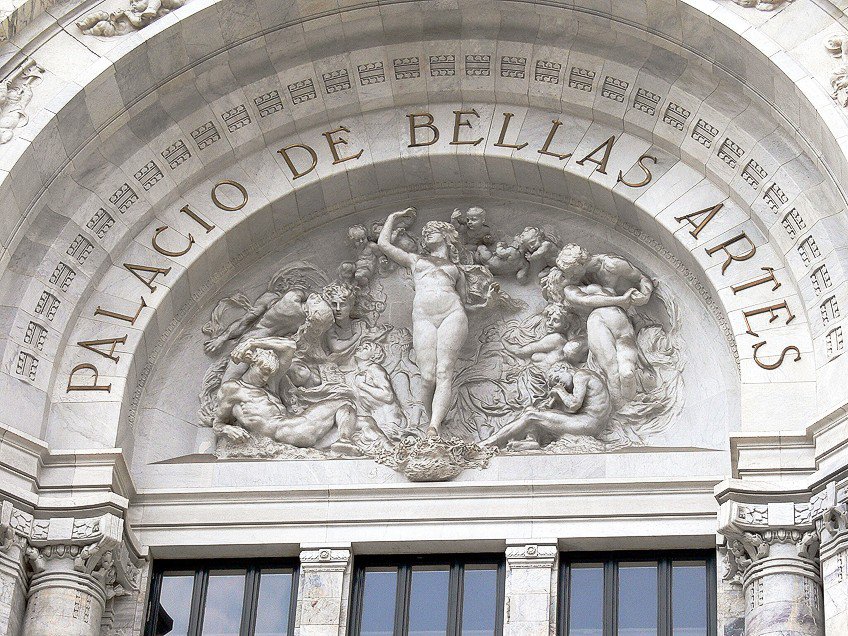
Not all attempts at restoring aspects of the Palacio de Bellas Artes in Mexico City have been met with praise, as there have been attempts to turn the building into a shopping mall and a hotel, but these plans ultimately never came to fruition. Instead, the conservation of the building’s original purpose and the restoration of its stunning architecture and internal artworks has been widely praised and supported by the people of the city and the country.
The Palacio de Bellas Artes in Mexico City has also become a national treasure and an important site within the historic city.
Visiting the Palacio de Bellas Artes in Mexico City
Anyone can visit the Palacio de Bellas Artes in Mexico City if they so choose, and there are a variety of options available for anyone who wishes to do so. The building does, of course, often host a number of events that can be attended, and it has a museum that is open to all, but it is also used as the center for tours around the historic center of the city, and so there are a variety of tours that start in this location.
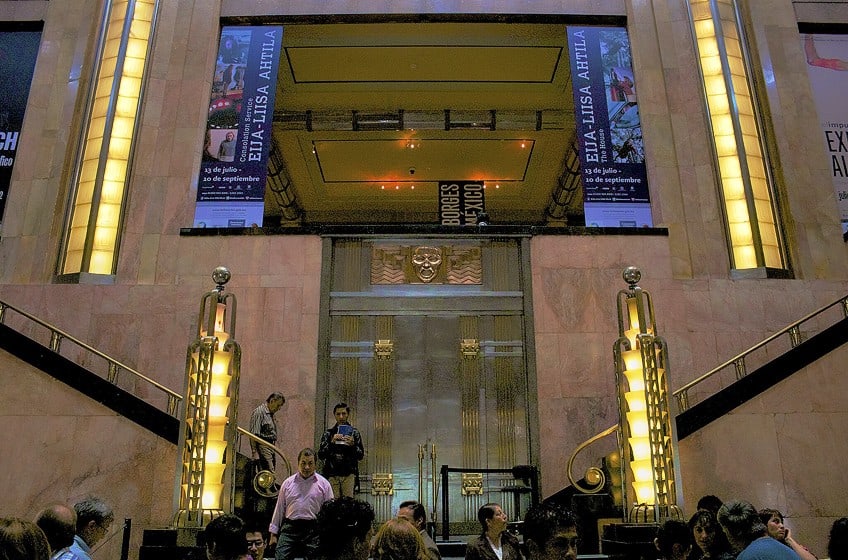
Many of those tours lead away from the Bellas Artes. Mexico is full of gorgeous sights to behold, and so the starting point that is this building can lead throughout the city, towards other tourist-oriented spots, and even to the Teotihuacan Pyramids. There is also a popular food-based tour that leads one through numerous locales throughout the city to enjoy delicious Mexican food.
We have arrived at the end of our discussion about the Palacio de Bellas Artes in Mexico City. This beautiful cultural center at the heart of Mexico’s capital city has served as a prime location within the country to exhibit the artistic legacy and future of the Mexican people. It hosts events, exhibits, and so much more. Hopefully, this article has given you a good understanding of the stunning Bellas Artes. Mexico is home to many other gorgeous locations though, and they are all worth a visit too!
Frequently Asked Questions
What Is the Palacio de Bellas Artes in Mexico City?
The Palacio de Bellas Artes in Mexico City is a popular cultural center in the middle of Mexico’s capital city. The structure has been used as a theater, opera house, museum, and exhibition space ever since it finished construction in the first half of the 20th century. It is used as a locale to highlight the artistic abilities and achievements of the Mexican people. However, it is also used to exhibit international artists at times.
When Was the Palacio de Bellas Artes Built?
The Palacio de Bellas Artes in Mexico City was constructed over the course of three decades. It was meant to be constructed between 1904 and 1910, but after an early hiccup with spongy soil that saw the building partially sink into the ground, the construction was halted. It was meant to resume, but then the Mexican Revolution happened. The building ultimately resumed work and was finally finished in 1934. It has been an important and popular location within the capital city ever since then.
Where Is the Palacio de Bellas Artes Located?
The Palacio de Bellas Artes is situated in the historic center of Mexico’s capital city, Mexico City. It is specifically located on the western side beside the Alameda Central Park. This means that the Palacio de Bellas Artes is easily accessible via public transport, as it can be found in the center of Mexico City.
What Is the Architectural Style of Palacio de Bellas Artes?
The Palacio de Bellas Artes in Mexico City makes use of a variety of different architectural styles. It is made up of a general Neoclassical and Art Nouveau exterior, as this was during the early period under the first primary architect, Adamo Boari. However, as the construction duration was such a lengthy one, the next primary architect was Federico Mariscal, and he saw to the interior’s Art Deco design. The building is also covered in a number of murals by a variety of Mexican artists.
What Is Performed in the Palacio de Bellas Artes?
The Palacio de Bellas Artes in Mexico City is home to a number of performances. There are numerous theatrical performances that take place in the cultural center, but some of the most common and prominent of them all include the National Symphonic Orchestra and the Ballet Folklórico de México. However, the Bellas Artes in Mexico provides theatrical space to far more than these groups, and the official website gives all the details on the upcoming performances that can be viewed in this stunning cultural center.
Justin van Huyssteen is a writer, academic, and educator from Cape Town, South Africa. He holds a master’s degree in Theory of Literature. His primary focus in this field is the analysis of artistic objects through a number of theoretical lenses. His predominant theoretical areas of interest include narratology and critical theory in general, with a particular focus on animal studies. Other than academia, he is a novelist, game reviewer, and freelance writer. Justin’s preferred architectural movements include the more modern and postmodern types of architecture, such as Bauhaus, Art Nouveau, Art Deco, Brutalist, and Futurist varieties like sustainable architecture. Justin is working for artfilemagazine as an author and content writer since 2022. He is responsible for all blog posts about architecture.
Learn more about Justin van Huyssteen and about us.
Cite this Article
Justin, van Huyssteen, “Palacio de Bellas Artes in Mexico City – Mexico City’s Cultural Gem.” artfilemagazine – Your Online Art Source. October 6, 2023. URL: https://artfilemagazine.com/palacio-de-bellas-artes-in-mexico-city/
van Huyssteen, J. (2023, 6 October). Palacio de Bellas Artes in Mexico City – Mexico City’s Cultural Gem. artfilemagazine – Your Online Art Source. https://artfilemagazine.com/palacio-de-bellas-artes-in-mexico-city/
van Huyssteen, Justin. “Palacio de Bellas Artes in Mexico City – Mexico City’s Cultural Gem.” artfilemagazine – Your Online Art Source, October 6, 2023. https://artfilemagazine.com/palacio-de-bellas-artes-in-mexico-city/.


